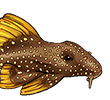/siluriformes/pseudopimelodidae/microglanis/malabarbai/1.jpg) Province of Corrientes, Argentina
Province of Corrientes, Argentina/siluriformes/pseudopimelodidae/microglanis/malabarbai/2.jpg) Rio Uruguay, Yapeyu, Corrientes prov., Argentina
Rio Uruguay, Yapeyu, Corrientes prov., Argentina/siluriformes/pseudopimelodidae/microglanis/malabarbai/3.jpg) Holotype
Holotype/siluriformes/pseudopimelodidae/microglanis/malabarbai/4.jpg) Holotype, dorsal view
Holotype, dorsal view/siluriformes/pseudopimelodidae/microglanis/malabarbai/5.jpg) Holotype, ventral view
Holotype, ventral view/siluriformes/pseudopimelodidae/microglanis/malabarbai/6.jpg) Province of Corrientes, Argentina
Province of Corrientes, Argentina/siluriformes/pseudopimelodidae/microglanis/malabarbai/7.jpg) Province of Corrientes, Argentina
Province of Corrientes, Argentina/siluriformes/pseudopimelodidae/microglanis/malabarbai/8.jpg) Province of Corrientes, Argentina.
Province of Corrientes, Argentina./siluriformes/pseudopimelodidae/microglanis/malabarbai/9.jpg) Province of Corrientes, Argentina
Province of Corrientes, Argentina/siluriformes/pseudopimelodidae/microglanis/malabarbai/10.jpg) Dorsal view, Province of Corrientes, Argentina,
Dorsal view, Province of Corrientes, Argentina,/siluriformes/pseudopimelodidae/microglanis/malabarbai/11.jpg) Rio Uruguay, Yapeyu, Corrientes prov., Argentina
Rio Uruguay, Yapeyu, Corrientes prov., Argentina/siluriformes/pseudopimelodidae/microglanis/malabarbai/12.jpg) Rio Uruguay, Yapeyu, Corrientes prov., Argentina
Rio Uruguay, Yapeyu, Corrientes prov., Argentina/siluriformes/pseudopimelodidae/microglanis/malabarbai/13.jpg) Close up of posterior body and caudal fin
Close up of posterior body and caudal fin/siluriformes/pseudopimelodidae/microglanis/malabarbai/14.jpg) Rio Uruguay, Yapeyu, Corrientes prov., Argentina
Rio Uruguay, Yapeyu, Corrientes prov., Argentina/siluriformes/pseudopimelodidae/microglanis/malabarbai/15.jpg) Rio Uruguay, Yapeyu, Corrientes prov., Argentina
Rio Uruguay, Yapeyu, Corrientes prov., Argentina/siluriformes/pseudopimelodidae/microglanis/malabarbai/16.jpg) Rio Uruguay, Yapeyu, Corrientes prov., Argentina
Rio Uruguay, Yapeyu, Corrientes prov., Argentina/siluriformes/pseudopimelodidae/microglanis/malabarbai/17.jpg) Rio Uruguay, Yapeyu, Corrientes prov., Argentina
Rio Uruguay, Yapeyu, Corrientes prov., Argentina/siluriformes/pseudopimelodidae/microglanis/malabarbai/18.jpg) Juvenile. Rio Uruguay, Yapeyu, Argentina
Juvenile. Rio Uruguay, Yapeyu, Argentina
| Scientific Name | Microglanis malabarbai Bertaco & Cardoso, 2005 |
| Common Name | |
| Type Locality | Arroio Albino, tributary of Rio Ijuí (Rio Uruguay drainage), 28°08'10''S 54°55'28''W, São Pedro do Butiá, Rio Grande do Sul, Brazil |
| Etymology | Micro - small, glanis - catfish - in reference to the rather small forms of catfish that this genus contains. The specific name honors Luiz Roberto Malabarba for his active contribution to the knowledge of the Neotropical ichthyofauna. |
| Size | 50mm or 2" SL. Find near, nearer or same sized spp. |
| Identification | The genus Microglanis was described by Eigenmann
(1912) to include small pimelodids with the head as wide as long, the skull covered by skin only; the occipital crest small; frontal fontanel not extending much if any behind the eye, and a minute occipital fontanel sometimes present; eye without a free orbital margin; dorsal and pectoral spines well developed; and premaxillary patches of teeth without backward projecting angles. This species was distinguished originally from all other Microglanis species by the caudal fin colour pattern which is almost completely black with a narrow vertical white band across central portions of the caudal-fin rays. Since then, genetically similar fish in the rio Uruguay have been found which do not develop such a black tail. Thus, identification of this species is difficult because some populations are very similar in appearance to M. cottoides. Accurate identification requires analysis of body proportions. See Souza-Shibatta et al. PLoS ONE 13(7): e0199963. |
| Sexing | Well-conditioned females are conspicuously wider in the abdomen than similarly sized males. |
| General Remarks | This species was collected originally from the rio Ijuí, a tributary of the middle rio Uruguay, Rio Grande do Sul, Brazil. Since then, Microglanis populations collected from the rio Uruguay drainage and previously believed to be M. cottoides have been shown genetically to be indistinguishable from M. malabarbai. Similar fish have been collected in the rio Sali and may be the same species. |
| Distribution | South America : known only from the Rio Ijuí, a tributary of the middle Rio Uruguay, Rio Grande do Sul, Brazil. La Plata, Uruguay, Middle Uruguay, Ijuí (click on these areas to find other species found there) La Plata, Uruguay, Middle Uruguay (click on these areas to find other species found there) La Plata (click on these areas to find other species found there) Login to view the map. |
| IUCN Red List Category | Near Threatened , range map and more is available on the IUCN species page. Last assessed 2018. |
| Furniture | Per the original description, all specimens of M. malabarbai were caught under dead tree branches and leaves in dark water, lentic stretches of shallow streams, with sand and mud on the bottom, and moderate amount of riparian vegetation. The rio Ijuí drainage is surrounded mainly by soybean, wheat, and pasture plantations, with narrow areas of original vegetation on stream margins. |
| Compatibility | Other species collected in same habitat with M. malabarbai were: Cichlasoma dimerus, Crenicichla scotti, Heptapterus mustelinus, Hisonotus sp., Rhamdia quelen and Rineloricaria sp. |
| Suggested Tankmates | Virtually all good community fish, although any young fry present in the aquarium will be in extreme jeopardy - especially after dark. |
| Breeding Reports | There is no breeding report. |
| Reference | Neotropical Ichthyology v. 3 (no. 1), pp 62, Fig. 2. |
| Registered Keepers | There is no registered keeper. |
| Wishlists | Love this species? Click the heart to add it to your wish list. There is but a single wish to keep this species, see who wants what. |
| Spotters | Spotted this species somewhere? Click the binoculars! There are 2 records of this fish being seen, view them all. |
| Forum BBCode | |
| Search for M. malabarbai | |
| Look up M. malabarbai on AquaticRepublic.com | |
 | Look up M. malabarbai on Fishbase |
 | Look up M. malabarbai on Encyclopedia of Life |
 | Look up M. malabarbai on Global Biodiversity Information Facility |
| LFS label creator ARN ref:1.31.106.3812 | |
| Last Update | 2025 Jan 01 12:22 (species record created: 2011 Sep 19 05:48) |




